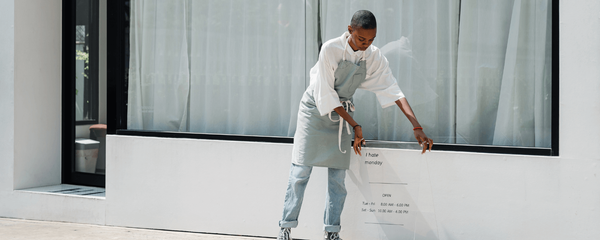So often I thought that there was a chapter missing in our accounting books or courses at school. We covered the World Wars, historic leaders, the Pythagoras theorem, Shakespeare’s works, radioactivity etc etc. Yet, NONE of these lessons ever mentioned how any of these world leaders worked with their own personal finances - who paid for what in the Shakespeare household, or what the savings goals were for Pierre and Marie Curie (the power couple that won a Nobel Prize).
This shortage of historical evidence of what works and what doesn’t when it comes to budgeting and saving is the reason why so many of us just have to navigate this very important journey (and required life skill) completely blind!
So starting off and not being very “savings savvy” I can honestly say that in my relationship, we have tried many ways to make our Rands stretch further over the years and tried all of these approaches:
1. A joint piggy bank (leaving savings for last)
We started off with separate bank accounts but had a joint piggy bank. We kept our bank accounts and individual spending separate but contributed into a central piggy bank (we even worked it out so that we each contribute based on a percentage of our individual net salaries).
The positive about this approach is that it is easy to keep track of our total household spend and we could quickly get a cadence of our spending habits. Everything that was left over at the end of the month was added to the joint piggy bank BUT the negative was that saving always came last (and some months not at all).
2. We closed the piggy bank ;(
We went from one big piggy bank to nothing! We divided the household bills and set up separate saving goals. This phase really changed the game for me and I was forced to learn how to manage personal and joint expenses and still budget for savings upfront.
The positive with this approach is that it forces “budget meetings”. We could also easily pick up from our own bank account if there was an increase in bills and required additional household spending.
3. Another 2 piggy banks ;)
We stuck to our separate lists of bills BUT we set up a long-term savings fund for our family. To keep my head in the game we also opened a short-term holiday fund.
This phase is all about making time to look at the bigger picture, setting goals, taking stock every now and then AS WELL AS ensuring that you put money aside to be able to splurge on a weekend away, a dinner date, or some champagne every now and again!
I wish I could say that there is a magic recipe and that we found the secret savings answer. Unfortunately, none of our approaches thus far have been perfect. They all have their ups and downs – but I guess we have learned some valuable lessons along the way.
One thing I was told long ago is that moneywise couples often swap a date night for a budget night. Unfortunately, this “budget date” definitely does NOT start with candlelight (load-shedding depending) and because of the tough conversations, it might not end with chocolates. Fortunately in our case, it did end with some short-term holiday goals ;)
There is no proof anywhere, but I am sure that the power couple, Pierre & Marie Curie, discovered the secret recipe that kept them going when working together on all those chemical formulas… A couple that budgets together – gets to spend their money together. ;)
For more tips, follow Karmen Robinson, a brand strategist who works to travel. Thank goodness for her short-term savings goals because this is how she and her fisherman can splash out on some champagne every now and then!










